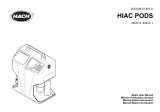
cobas IT middleware
Roche Diagnostics
2 User Manual · version 6
Document information
Editor’s note Every effort has been made to ensure that the information contained in this manual is
accurate at the time of printing. Not all functionality described in this manual may be
available to all users. Roche Diagnostics International Ltd reserves the right to make
any further required changes to software without prior notice. Such changes may not
immediately be reflected in this document.
Intended use
This document is intended for the users of the cobas
®
IT middleware system, version
1.05.00.
The cobas
®
IT middleware is a middleware solution (MWS) for the diagnostic
laboratory. Laboratories are located in hospitals or run in private ownership. The
cobas
®
IT middleware can be connected to one or several of the following systems:
o Roche pre-analytic instruments
o Roche post-analytical instruments
o Roche analytical instruments (biochemistry, immunology, urine analysis,
coagulation)
o Roche live view (customer dashboard displaying operational KPIs based on data
generated by cobas
®
IT middleware)
o Non-Roche analytical instruments (biochemistry, immunology, urine analysis,
coagulation, hematology, and molecular and tissue diagnostics)
o Laboratory information systems
o Hospital information systems
o Electronic health record systems
o Non-Roche work area management solutions for hematology, clinical chemistry,
or urine-analysis.
Connectivity between cobas
®
IT middleware and the instruments or systems
mentioned above endorse to exchange data uni- or bidirectionally via interface. Uni-
and bidirectionally transmitted data contain patient information, order data, and
result data. The solution manages the data in a central database.
Copyright © 2012-2015, F. Hoffmann-La Roche Ltd. All rights reserved.
Manual version Software version Revision dates Main change
1.00.00 (revision 1) 1.00.00 January 2012 First version of the
manual.
1.01.00 (revision1) 1.01.00 August 2012 Software and manual
updates.
1.02.00 (revision1) 1.02.00 June 2013 Software and manual
updates.
Version 4 1.03.00 February 2014 Software and manual
updates.
Version 5 1.04.00 July 2014 Software and manual
updates.
Version 6 1.05.00 January 2015 Software and manual
updates.
Table 1 Revision history





















